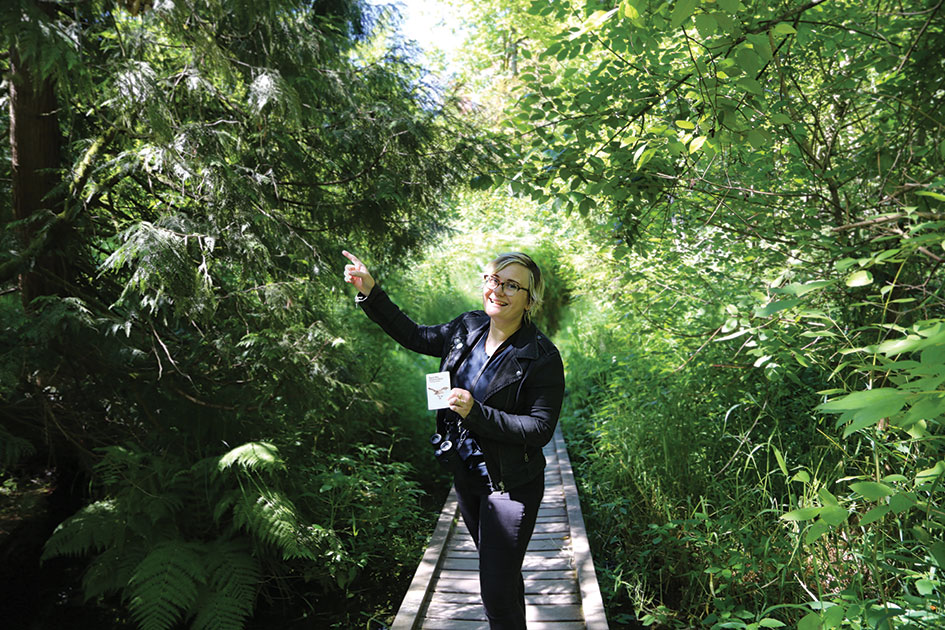Tackle Climate Change—Go Bird Watching
Anyone who has taken a study break to walk the trails of the canyon knows that connecting with the natural environment creates a sense of belonging and stewardship. Getting city dwellers into green spaces is an effective way to create a culture of conservation. But environmental studies–history major Esther Forbyn ’16 found that some Portlanders, especially traditionally marginalized groups like low-income residents and recent immigrants, can feel excluded from these spaces. Not only are they missing out on the benefits of communing with nature, the conversation about solutions to environmental problems is lacking important voices.
For Esther, solving this problem is crucial for tackling huge problems like global warming and loss of biodiversity. She researched Portland ecology for her senior thesis, which she wrote with Prof. Josh Howe [environmental studies & history 2012–], focusing on the history of wild areas in Portland and Portlanders’ relationship with nature. But in addition to her scholarship, she saw an opportunity to take action through a new interest of hers: bird watching.
Esther, a native Oregonian from a working-class background who began birding five years ago, created a simple but elegant solution to the problem of helping traditionally marginalized groups feel welcomed into wild spaces: she designed a deck of bilingual, illustrated flash cards called 30 Birds to Know in Portland/30 Aves Para Conocer en Portland. Then she launched an outreach project to put them in the hands of Portlanders who would benefit from feeling invited and involved. “Birding has been a way that I connect to a wild place. I slow down, I listen, I look closely, and I start to invest in that space,” she says.
The cards have proven popular. They feature beautiful, hand-illustrated line-and-watercolor images drawn by Esther herself. The deck of 30 includes species common to Portland like Steller’s Jay (Chara Crestada, as it’s known in Spanish) or the House Sparrow (Gorrión Domestico), but also some prize finds like the Western Tanager (Tangara de Capucha Roja) or the Peregrine Falcon (Halcón Peregrino).
Her work has caught the eye of several local groups such as the Audubon Society of Portland, Bark, Friends of Nadaka, Columbia Slough Watershed Council, and the intercultural communication center People-Places-Things. With each of these organizations she is partnering on similar projects.
“Esther has a big vision for herself and for making the natural world more accessible to people in a very intimate way,” says Jim Labbe ’95, former urban conservationist for the Audubon Society of Portland, who is working with Esther on a set of Russian-language cards.
Next time you’re in the Reed canyon, perhaps you’ll be able to determine whether that bright blue bird sunning itself on the pathway is a Scrub Jay or a Steller’s Jay, or maybe even a Western Bluebird—which has not been seen in Reed’s neighborhood for many years.
Tags: Alumni, Climate, Sustainability, Environmental, Research, Cool Projects
